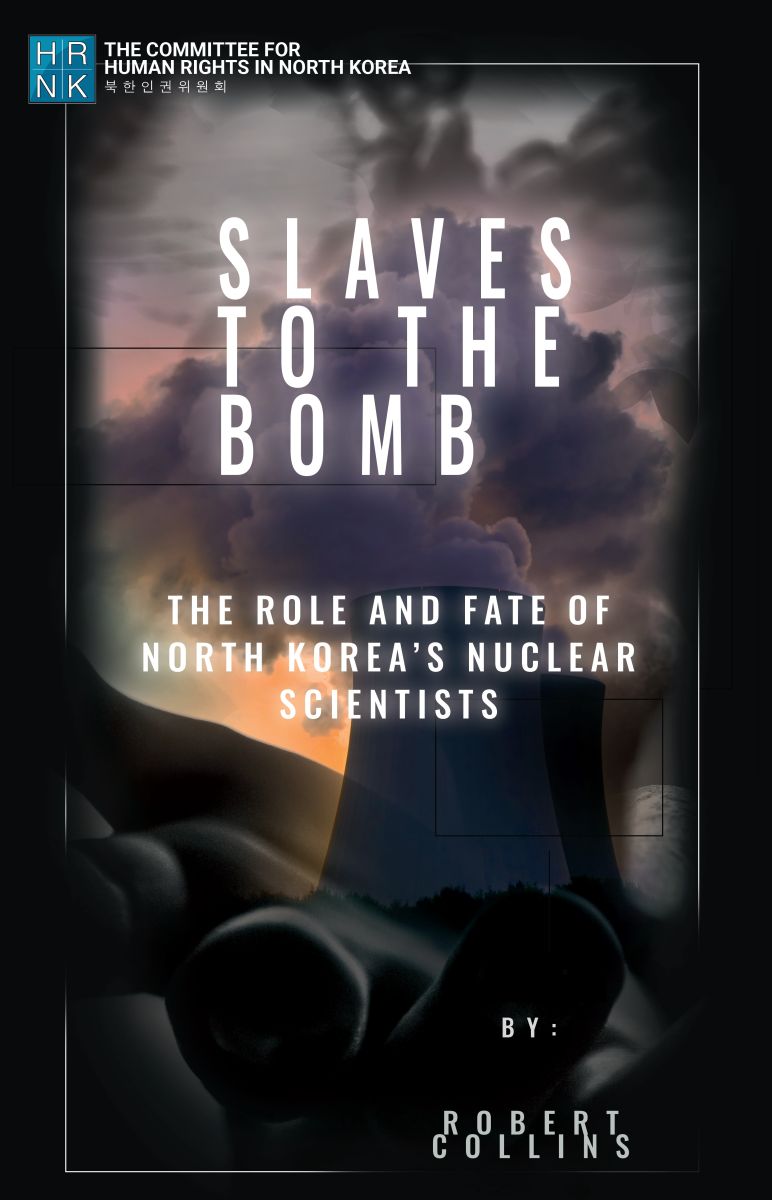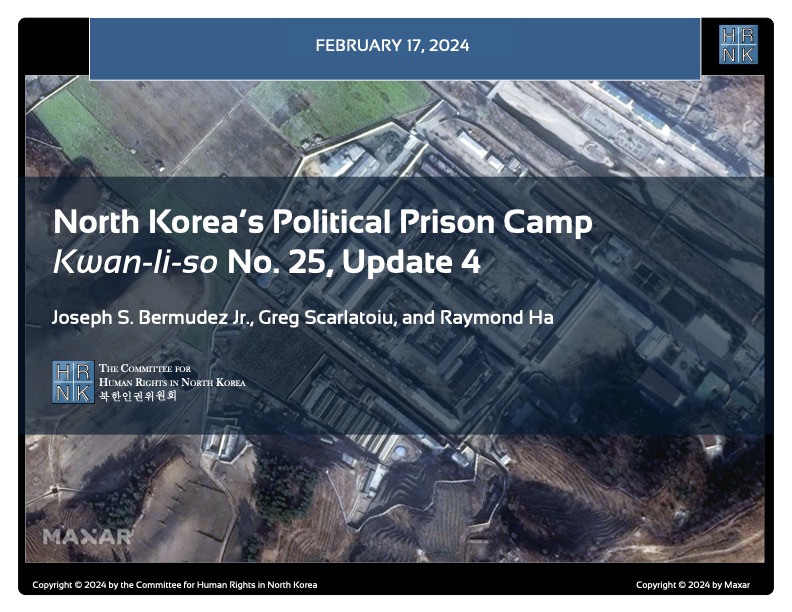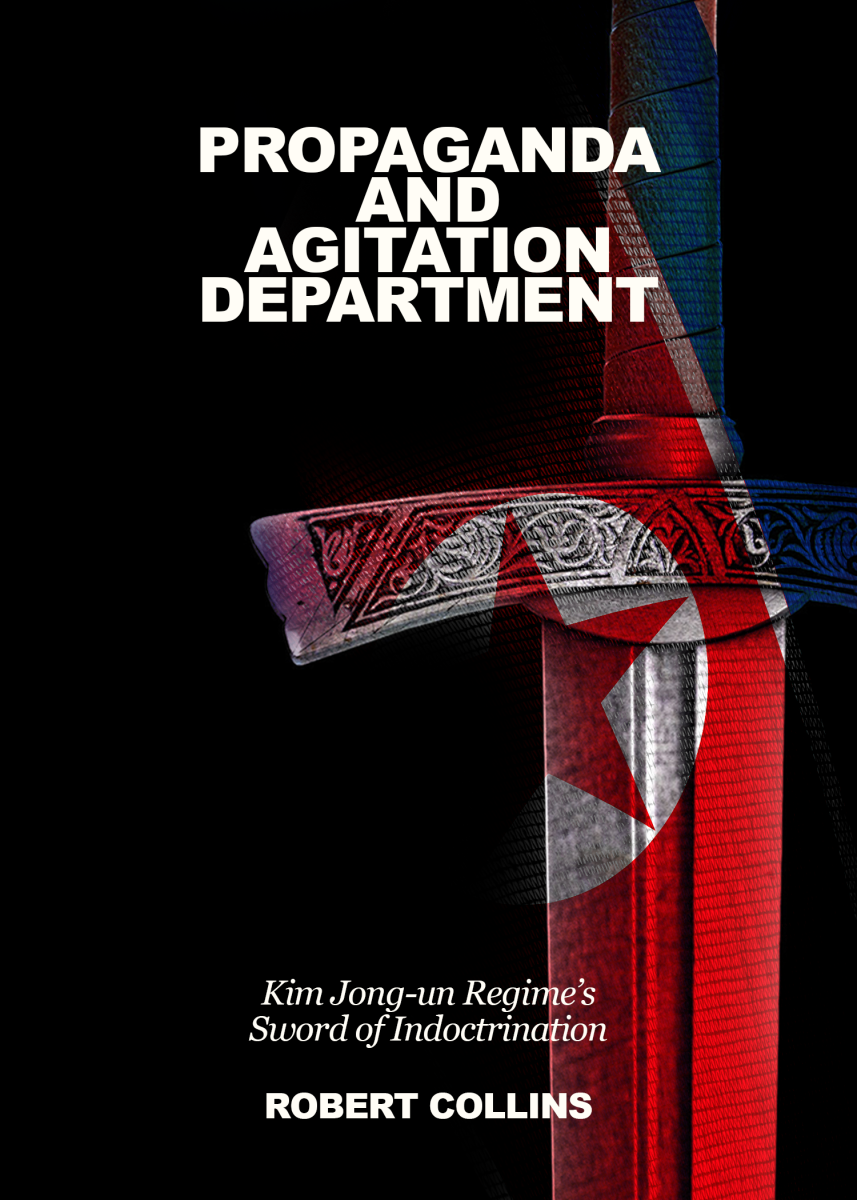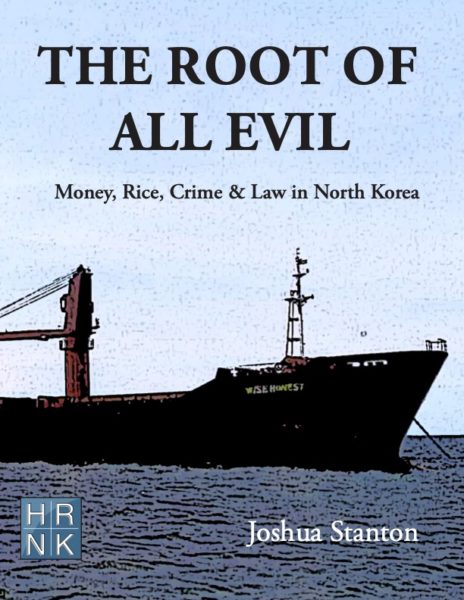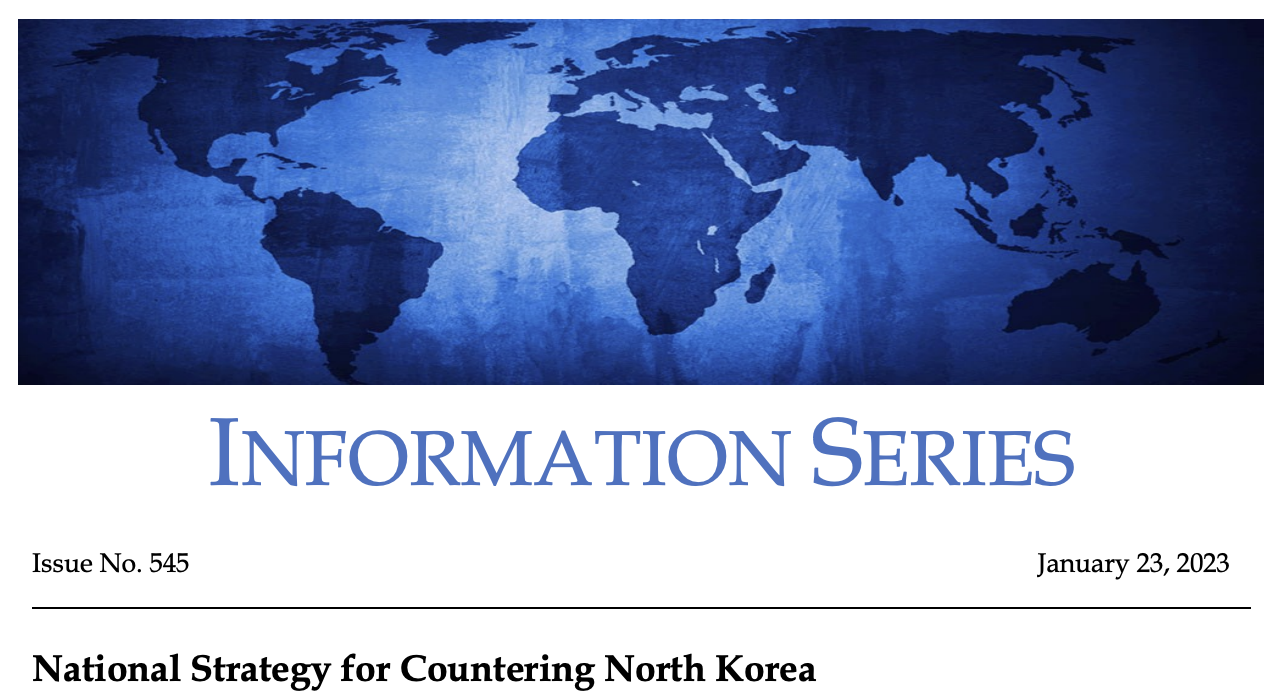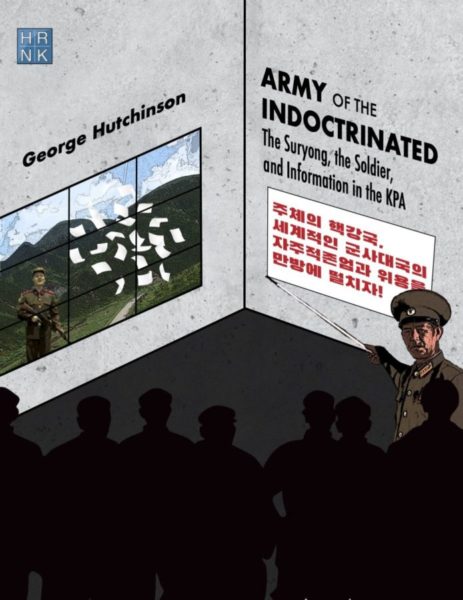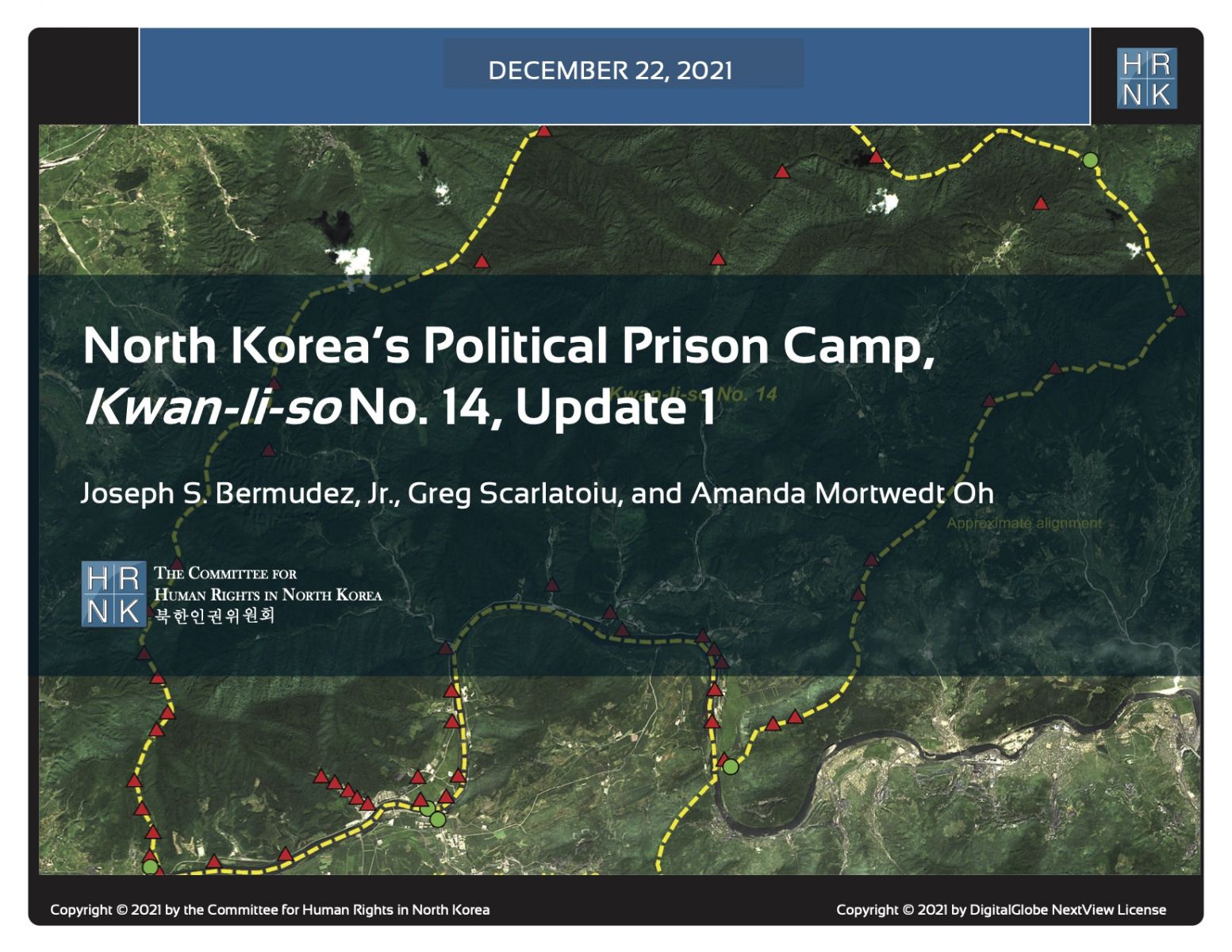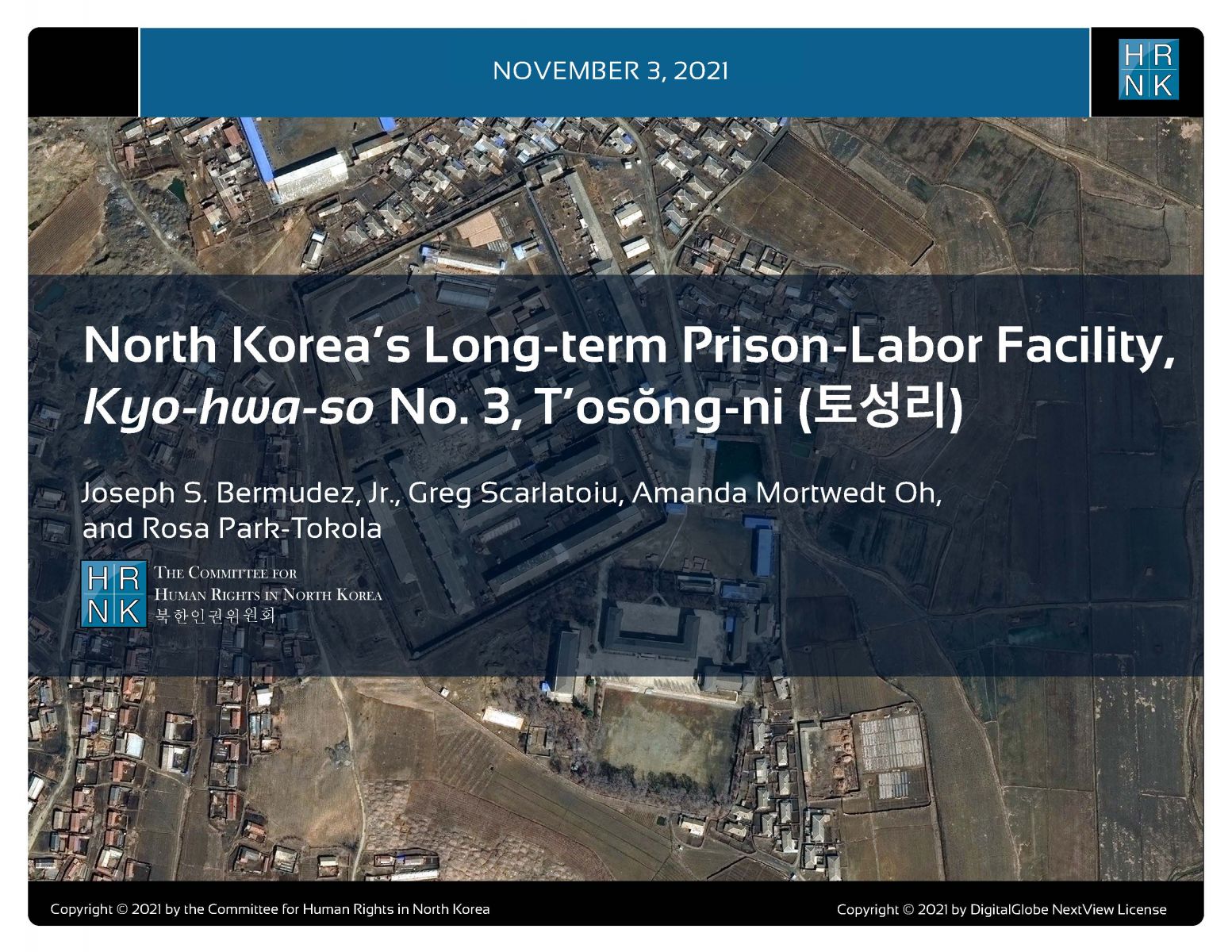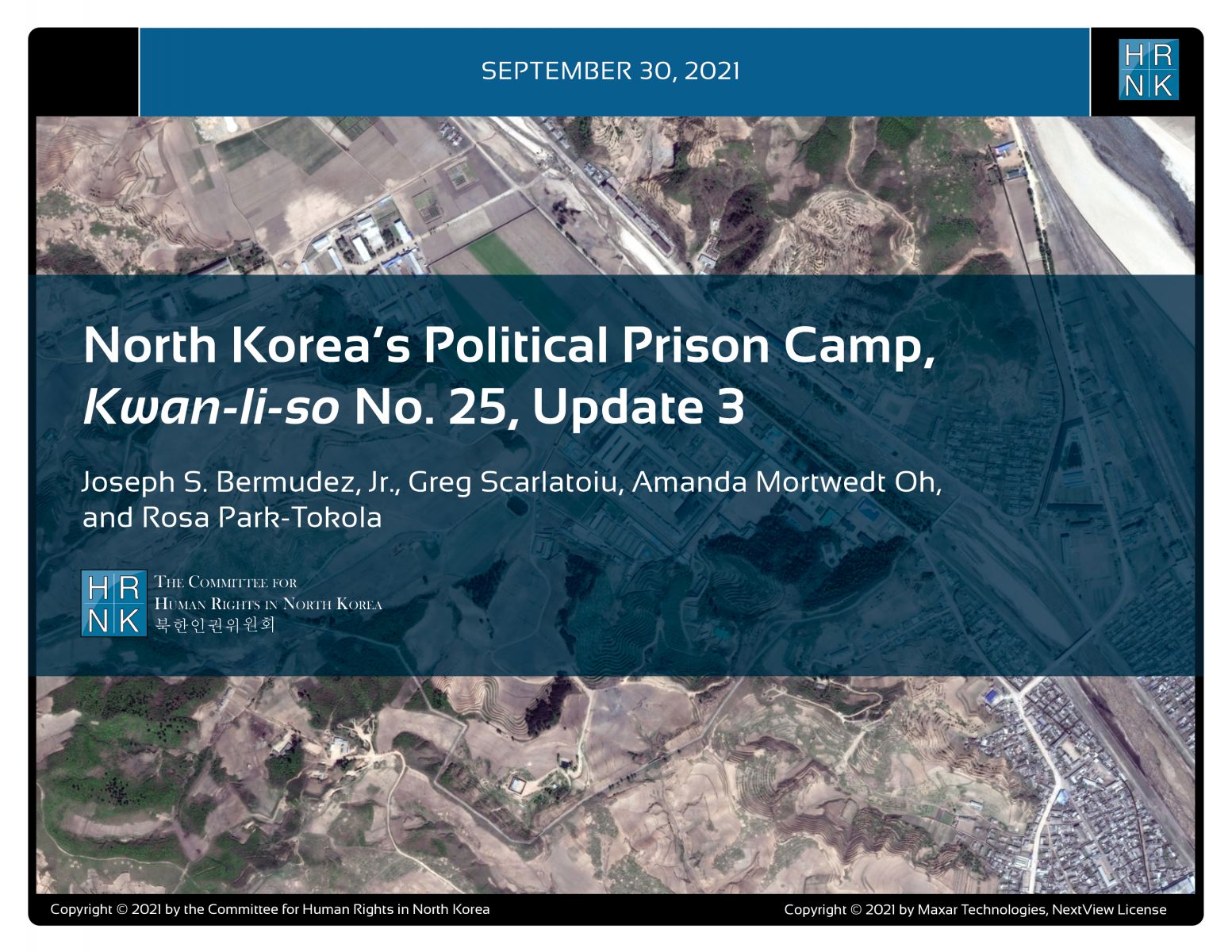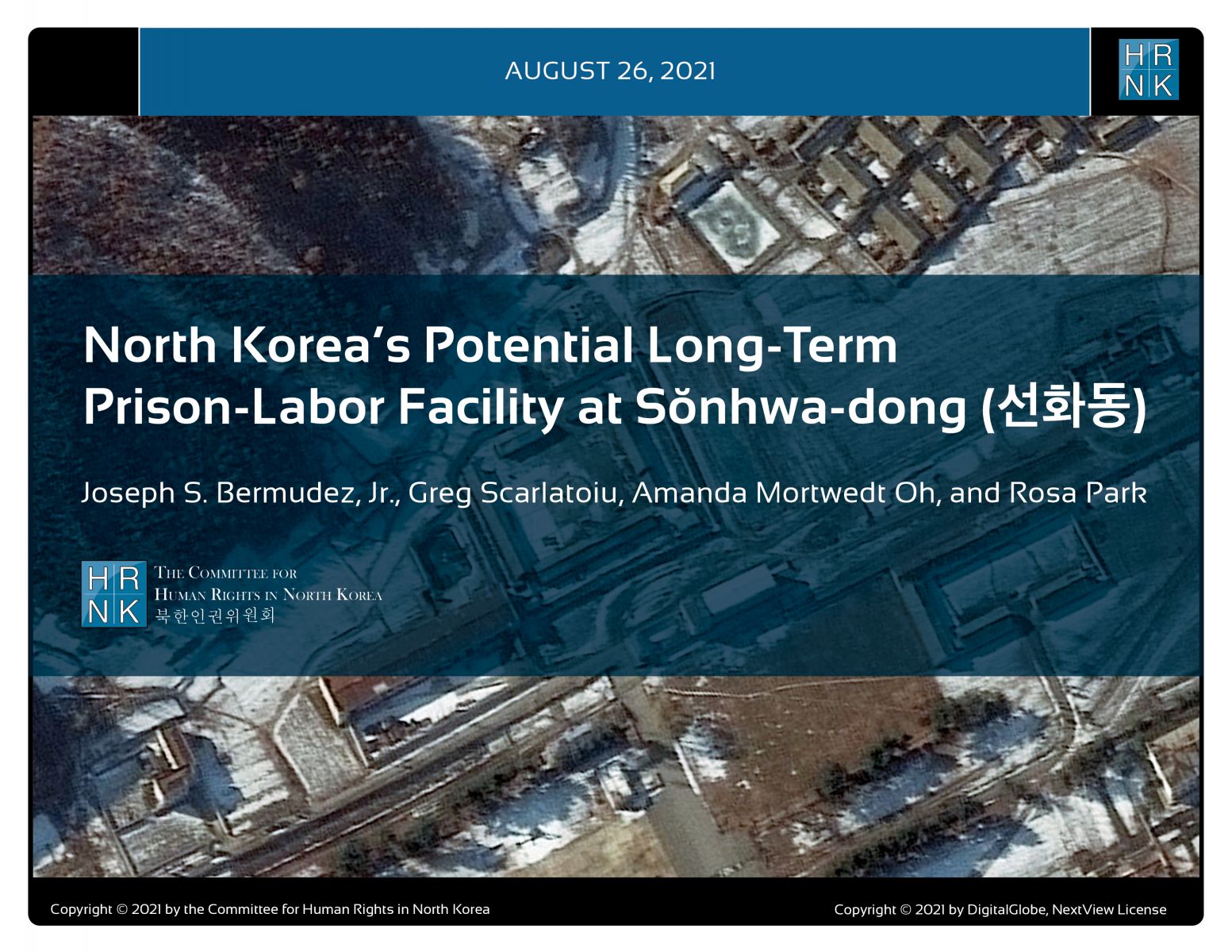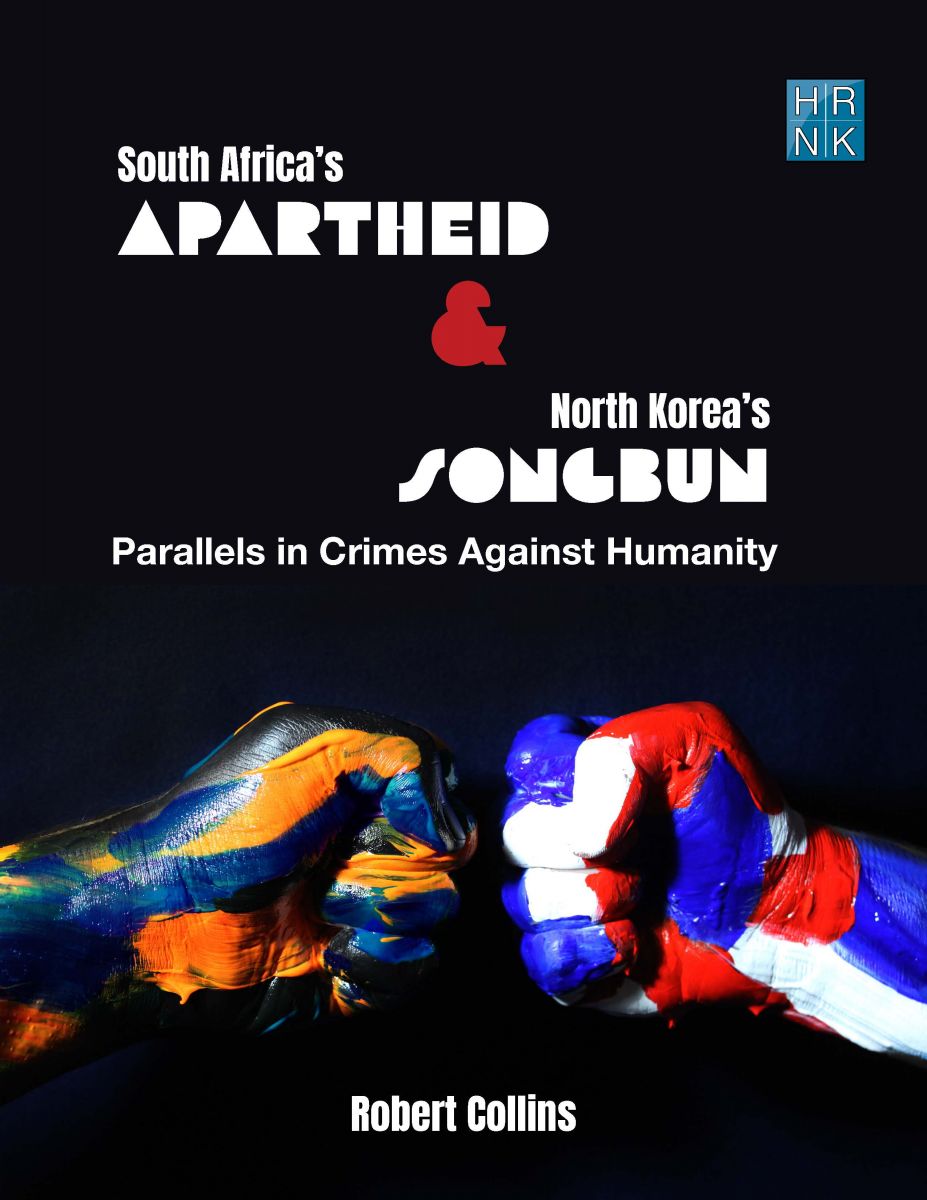PRESS RELEASE
Tuesday, August 30, 2016
The Committee for Human Rights in North Korea (HRNK) and AllSource Analysis Launch Report Based on Satellite Imagery of North Korea’s Kyo-hwa-so No. 12, Jongo-ri
Report confirms expansion of detention facilities for women, overcrowded prison conditions and the continued use of prison labor. Report urges North Korean government to comply with the Standard Minimum Rules for the Treatment of Prisoners, allow ICRC access, and improve the nutrition, workplace health and safety standards of prisoners.
The Committee for Human Rights in North Korea (HRNK), a non-governmental organization based in Washington, D.C. and AllSource Analysis, a leading global provider of high-resolution earth imagery solutions, have launched a report entitled North Korea: Imagery Analysis of Kyo-hwa-so No. 12, Jongo-ri. Although the detention facility was featured in the September 2015 report The Hidden Gulag IV: Gender Repression and Prisoner Disappearances by David Hawk, this is the first HRNK/AllSource Analysis satellite imagery report addressing a kyo-hwa-so.
The report calls upon the North Korean government to: improve the nutritional status of prisoners, many of whom suffer from severe malnutrition; improve health and safety standards at worksites where prison labor is present, in particular at the copper mine adjacent to Kyo-hwa-so No. 12; allow the ICRC immediate, full, and genuine access to this and all other detention facilities in the DPRK; comply with the Standard Minimum Rules for Treatment of Prisoners; and reduce water contamination resulting from the adjacent copper mine operated with prison labor.
Unlike the kwan-li-so political prison camps, the kyo-hwa-so re-education prison labor camps also detain common offenders, who are given actual prison sentences, held together with those sentenced for essentially political offenses. One feature that the kwan-li-so and the kyo-hwa-so have in common is the extreme brutality of the conditions of detention.
The report on Kyo-hwa-so No. 12 can be downloaded from HRNK’s website (HRNK.ORG), together with other HRNK publications. For this report, AllSource Analysis used pan-sharpened multispectral satellite imagery of Kyo-hwa-so No. 12 and its immediate environs collected by: DigitalGlobe, Airbus Defense and Space, and NASA’s EO-1 from July 12, 2003 through May 24, 2015; NASA’s Landsat from May 27, 1976 through June 6, 1984; and USGS declassified KH-4 from April 7, 1967.
Run by the North Hamgyong Provincial Bureau, under the Prisons Bureau of the North Korean Ministry of People’s Security, Kyo-hwa-so No. 12 is located about 490 km northeast of the capital city of Pyongyang, and approximately 25 km south of Hoeryong City. It consists of two primary facilities: a walled prison facility commonly known as “Jongo-ri;” and a copper mine situated in a small branch valley a short distance south of the prison facility. The walled prison facility measures approximately 188 meters by 128 meters (205 yards by 139 yards), encompasses 2,360 hectares (28,230 square yards), and is encased by three-meter high walls, four elevated guard positions, and two exterior entrances.
Kyo-hwa-so No. 12 was established between 1980 and 1983 in an area known for orchards, beans, potatoes, and corn farming and logging. Satellite imagery analysis confirms witness testimony that the camp has added light industry and mining to the economic activities performed by prisoners. Satellite imagery also confirms witness testimony that an annex to the compound was built in February – August 2009 to deal with an increase in the number of female prisoners. Satellite imagery acquired in June 2015 identified a total of 65 housing units immediately adjacent to the main walled prison compound, most likely meant for the camp’s managers, senior party officials, senior security officials and their families.
Kyo-hwa-so No. 12 prison population estimates have ranged from 1,300 in the late 1990s to about 5,000 in recent years. According to Joseph Bermudez, AllSource Analysis co-founder and chief analytics officer, “if the more recent figures are even close to accurate, then Kyo-hwa-so No. 12 is an overcrowded detention facility, judging by international standards.” Bermudez further added: “According to South Korea’s KINU, there is even a unit for undernourished prisoners at Kyo-hwa-so No. 12, which underscores that overcrowding and malnutrition are prevalent at this detention facility.”
Twenty percent of the prisoners are reportedly women. About 80% of the female prisoners are North Korean nationals forcibly repatriated from China. HRNK Executive Director Greg Scarlatoiu pointed out that “their detention highlights the illegality of China’s forcible repatriation of North Korean refugees to conditions of danger, despite overwhelming and justified fear of persecution, in direct violation of the 1951 UN Convention relating to the Status of Refugees, to which China is a party.”
The report confirms sustained—if not increased—economic activity at Kyo-hwa-so No. 12, which is a trend identified through previous HRNK/AllSource Analysis satellite imagery reports on other detention facilities in North Korea. Scarlatoiu remarked that “the importance of prison labor at the adjacent copper mine, confirmed by satellite imagery analysis, continues to focus attention on the tainted supply chain of North Korea’s extractive industry.” Joseph Bermudez further added that, “given the condition of the waste pond and earthen dam erected from mine waste at the copper mine, and given the proximity to the nearby stream, it is very likely that the mining operation is contaminating the water downstream.” According to Bermudez, “such mining facilities recklessly operated with prison labor also pose a threat to the human security of those living downstream outside the camp, by polluting their water supply.”
The report is the latest step in a collaborative effort by HRNK and AllSource Analysis to create a clear picture of the evolution and current state of North Korea’s political prison camps and other detention facilities. HRNK is the NGO that put North Korea’s penal labor colonies on the map by publishing Hidden Gulag in 2003, Hidden Gulag Second Edition in 2012, North Korea’s Hidden Gulag: Interpreting Reports of Changes in the Prison Camps in 2013, and The Hidden Gulag IV: Gender Repression & Prisoner Disappearances in 2015, all authored by world-renowned investigator David Hawk. Gulag, Inc., authored by senior North Korean defector Kim Kwang-jin and published by HRNK in 2016, addressed the use of forced and prison labor in North Korea’s tainted extractive industry supply chain. Together, HRNK and AllSource Analysis have been closely monitoring North Korea’s political prison camps so that any attempts to distort the harsh reality of the camps by destroying evidence will not go unnoticed. In a speech given before the 7,575th meeting of the UN Security Council on December 10, 2015, U.S. Ambassador Samantha Power quoted some of the findings of The Hidden Gulag IV.
The report North Korea: Imagery Analysis of Kyo-hwa-so No. 12, Jongo-ri is available on HRNK’s website: http://www.hrnk.org/uploads/pdfs/ASA_HRNK_Camp12_201608_v10_LR.pdf.
Contact: Greg Scarlatoiu, executive director
[email protected]; 202-499-7973
This is the first satellite imagery report by HRNK on a long-term political prison commonly identified by researchers and former detainees as Kwan-li-so No. 18 (Pukch'ang).
This report was concurrently published on Tearline at https://www.tearline.mil/public_page/prison-camp-18.
To understand the challenges faced by the personnel who are involved in North Korea’s nuclear program, it is crucial to understand the recruitment, education, and training processes through the lens of human rights. This report offers a starting point toward that understanding.
North Korea’s scientists and engineers are forced to work on the nuclear weapons program regardless of their own interests, preferences, or aspirations. These individuals may be described as “moder
In this submission, HRNK focuses its attention on the following issues in the DPRK:
- The status of the system of detention facilities, where a multitude of human rights violations are ongoing.
- The post-COVID human security and human rights status of North Korean women, with particular attention to sexual and gender-based violence (SGBV).
- The issue of Japanese abductees and South Korean prisoners of war (POWs), abductees, and unjust detainees.
This report provides an abbreviated update to our previous reports on a long-term political prison commonly identified by former prisoners and researchers as Kwan-li-so No. 25 by providing details of activity observed during 2021–2023.
This report was originally published on Tearline at https://www.tearline.mil/public_page/prison-camp-25.
This report explains how the Kim regime organizes and implements its policy of human rights denial using the Propaganda and Agitation Department (PAD) to preserve and strengthen its monolithic system of control. The report also provides detailed background on the history of the PAD, as well as a human terrain map that details present and past PAD leadership.
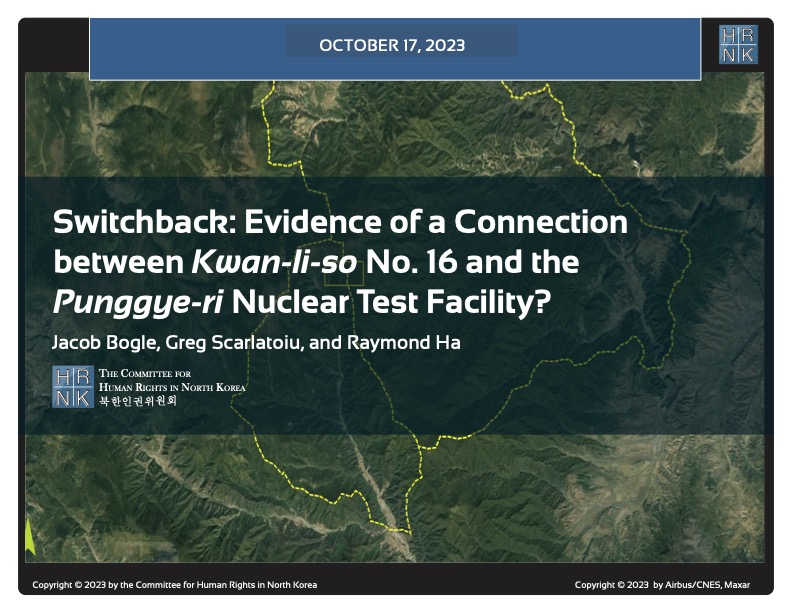
HRNK's latest satellite imagery report analyzes a 5.2 km-long switchback road, visible in commercial satellite imagery, that runs from Testing Tunnel No. 1 at North Korea's Punggye-ri nuclear test facility to the perimeter of Kwan-li-so (political prison camp) no. 16.
This report proposes a long-term, multilateral legal strategy, using existing United Nations resolutions and conventions, and U.S. statutes that are either codified or proposed in appended model legislation, to find, freeze, forfeit, and deposit the proceeds of the North Korean government's kleptocracy into international escrow. These funds would be available for limited, case-by-case disbursements to provide food and medical care for poor North Koreans, and--contingent upon Pyongyang's progress
For thirty years, U.S. North Korea policy have sacrificed human rights for the sake of addressing nuclear weapons. Both the North Korean nuclear and missile programs have thrived. Sidelining human rights to appease the North Korean regime is not the answer, but a fundamental flaw in U.S. policy.
(Published by the National Institute for Public Policy)
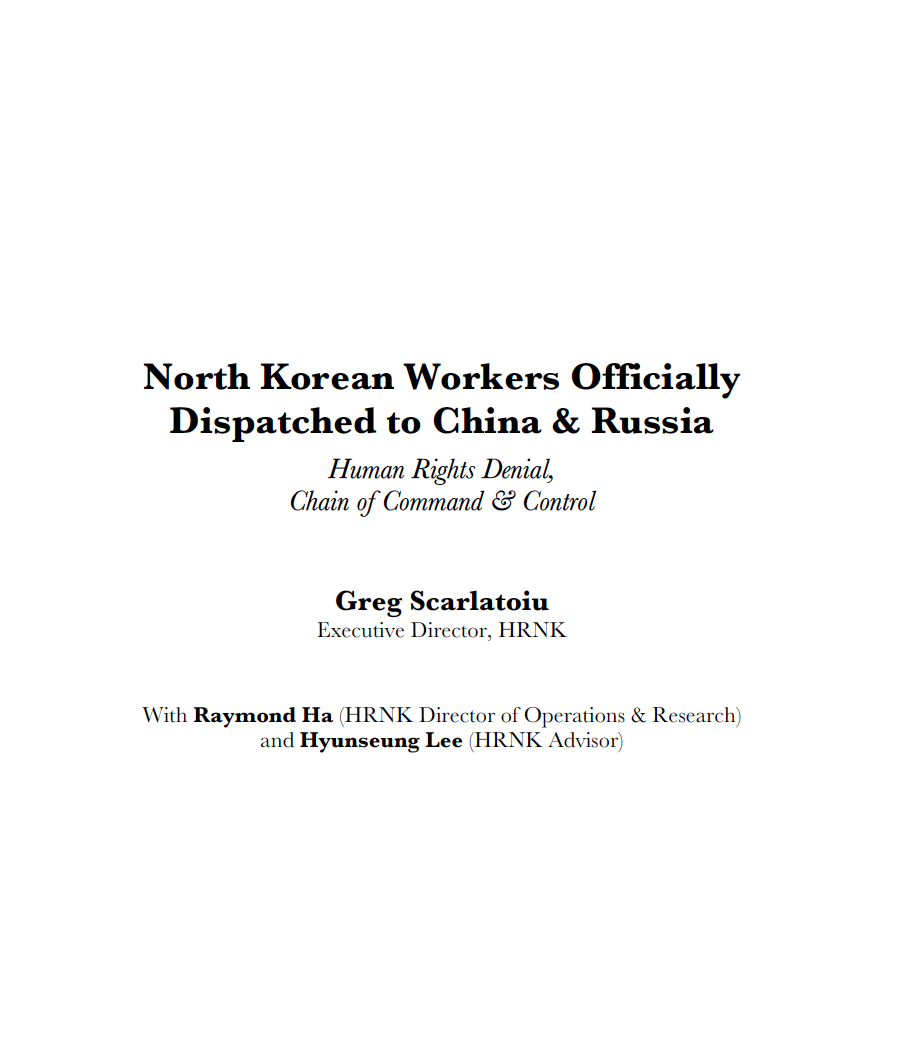
North Korea’s forced labor enterprise and its state sponsorship of human trafficking certainly continued until the onset of the COVID pandemic. HRNK has endeavored to determine if North Korean entities responsible for exporting workers to China and Russia continued their activities under COVID as well.
George Hutchinson's The Suryong, the Soldier, and Information in the KPA is the second of three building blocks of a multi-year HRNK project to examine North Korea's information environment. Hutchinson's thoroughly researched and sourced report addresses the circulation of information within the Korean People's Army (KPA). Understanding how KPA soldiers receive their information is needed to prepare information campaigns while taking into account all possible contingenc
This report is part of a comprehensive long-term project undertaken by HRNK to use satellite imagery and former prisoner interviews to shed light on human suffering in North Korea by monitoring activity at political prison facilities throughout the nation. This is the second HRNK satellite imagery report detailing activity observed during 2015 to 2021 at a prison facility commonly identified by former prisoners and researchers as “Kwan-li-so No. 14 Kaech’ŏn” (39.646810, 126.117058) and
This report is part of a comprehensive long-term project undertaken by HRNK to use satellite imagery and former prisoner interviews to shed light on human suffering in North Korea by monitoring activity at civil and political prison facilities throughout the nation. This study details activity observed during 1968–1977 and 2002–2021 at a prison facility commonly identified by former prisoners and researchers as "Kyo-hwa-so No. 3, T'osŏng-ni" and endeavors to e
This report is part of a comprehensive long-term project undertaken by HRNK to use satellite imagery and former detainee interviews to shed light on human suffering in the Democratic People’s Republic of Korea (DPRK, more commonly known as North Korea) by monitoring activity at political prison facilities throughout the nation. This report provides an abbreviated update to our previous reports on a long-term political prison commonly identified by former prisoners and researchers as Kwan-li-so<
Through satellite imagery analysis and witness testimony, HRNK has identified a previously unknown potential kyo-hwa-so long-term prison-labor facility at Sŏnhwa-dong (선화동) P’ihyŏn-gun, P’yŏngan-bukto, North Korea. While this facility appears to be operational and well maintained, further imagery analysis and witness testimony collection will be necessary in order to irrefutably confirm that Sŏnhwa-dong is a kyo-hwa-so.
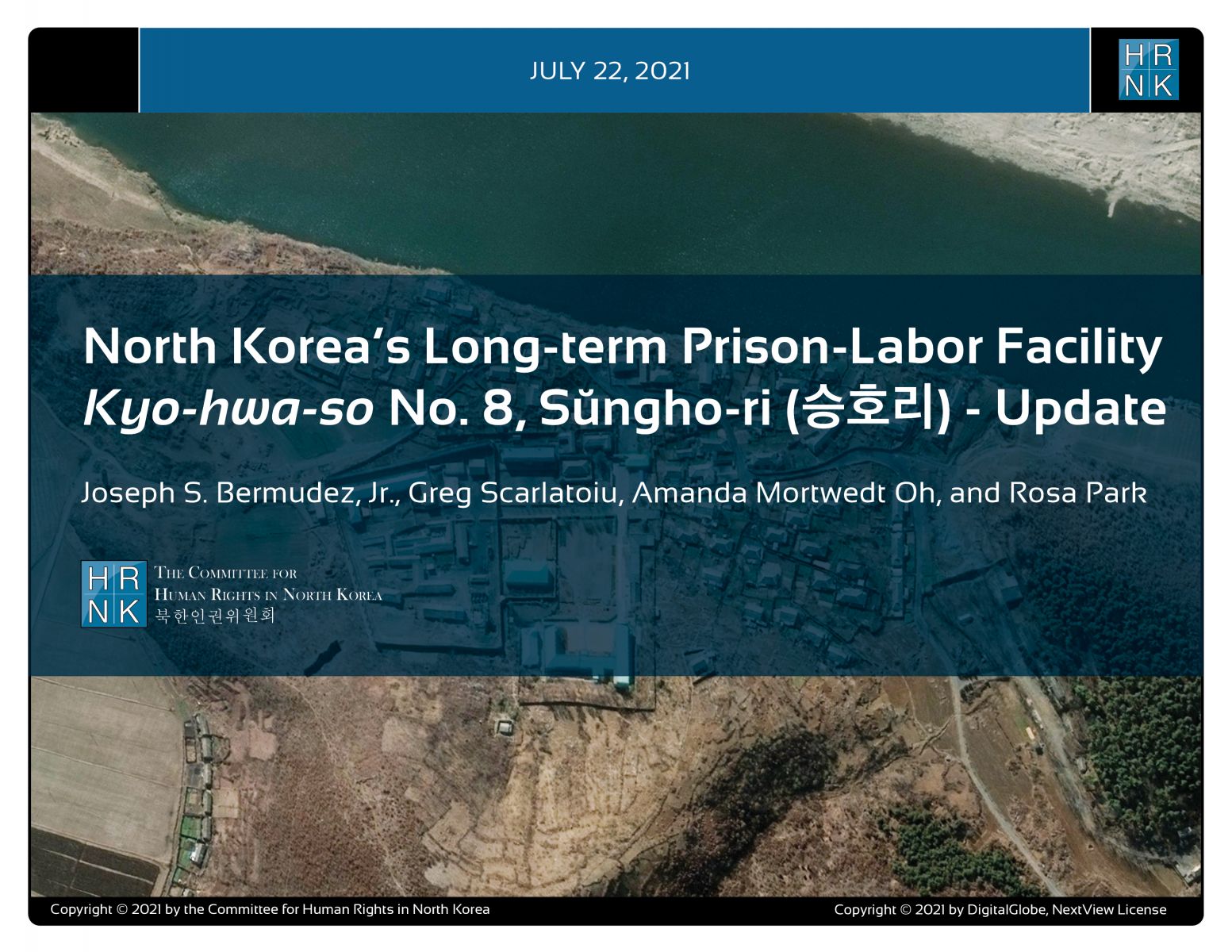
"North Korea’s Long-term Prison-Labor Facility Kyo-hwa-so No. 8, Sŭngho-ri (승호리) - Update" is the latest report under a long-term project employing satellite imagery analysis and former political prisoner testimony to shed light on human suffering in North Korea's prison camps.
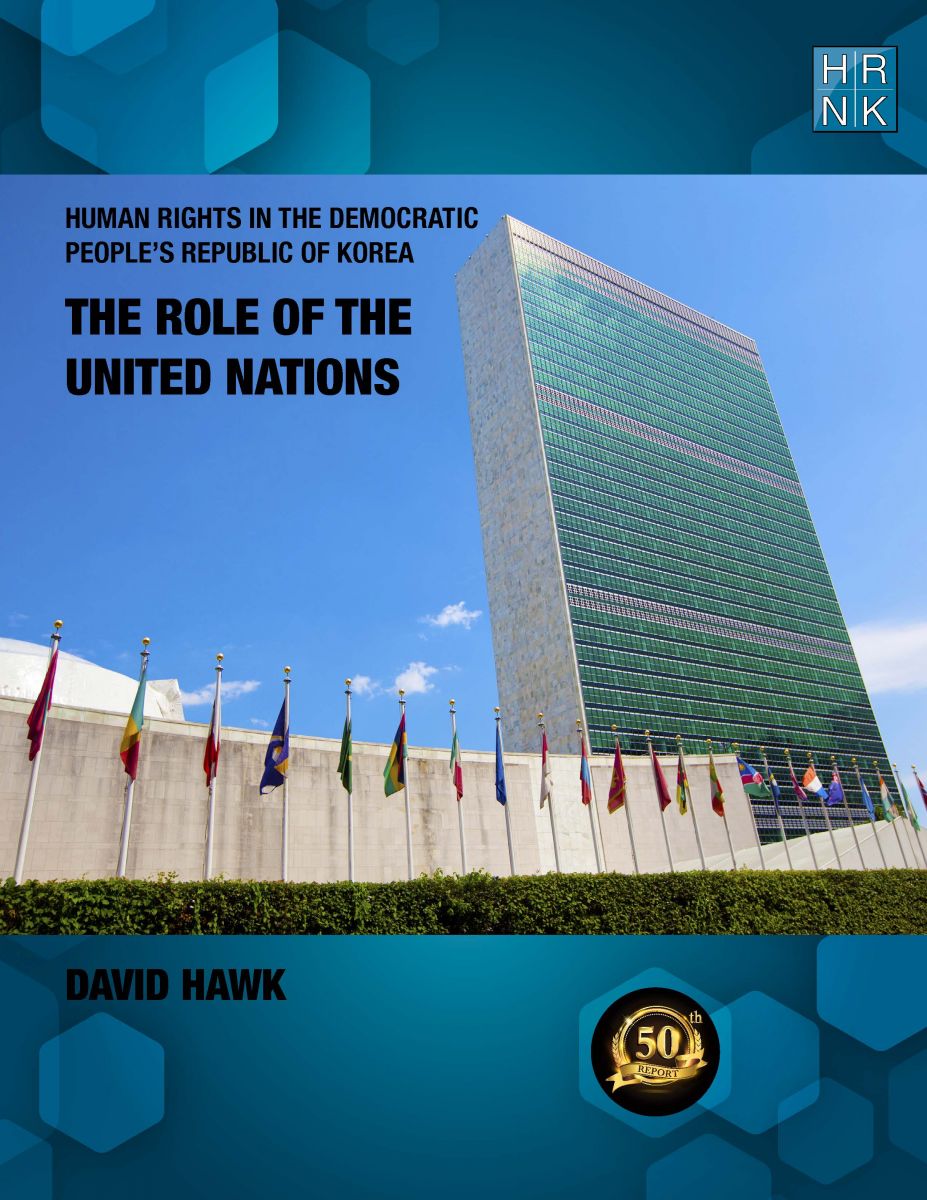
Human Rights in the Democratic Republic of Korea: The Role of the United Nations" is HRNK's 50th report in our 20-year history. This is even more meaningful as David Hawk's "Hidden Gulag" (2003) was the first report published by HRNK. In his latest report, Hawk details efforts by many UN member states and by the UN’s committees, projects and procedures to promote and protect human rights in the DPRK. The report highlights North Korea’s shifts in its approach
South Africa’s Apartheid and North Korea’s Songbun: Parallels in Crimes against Humanity by Robert Collins underlines similarities between two systematically, deliberately, and thoroughly discriminatory repressive systems. This project began with expert testimony Collins submitted as part of a joint investigation and documentation project scrutinizing human rights violations committed at North Korea’s short-term detention facilities, conducted by the Committee for Human Rights

